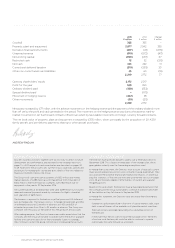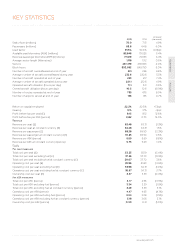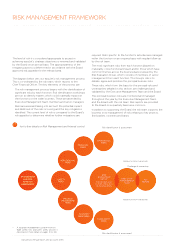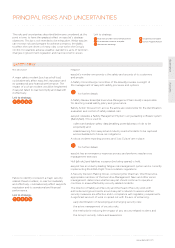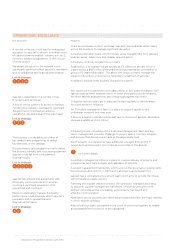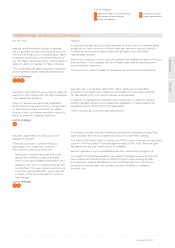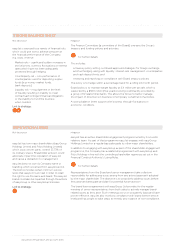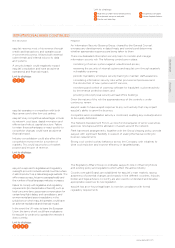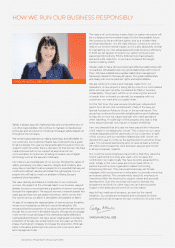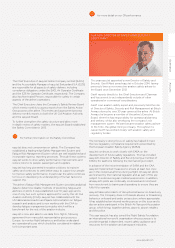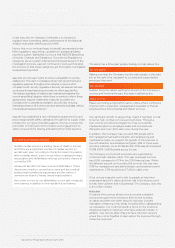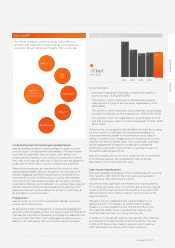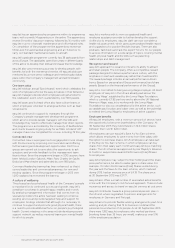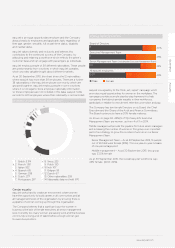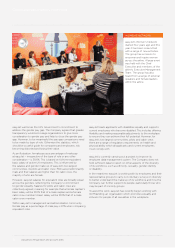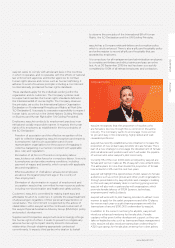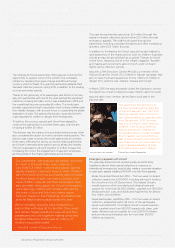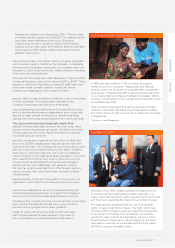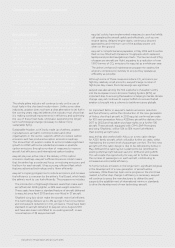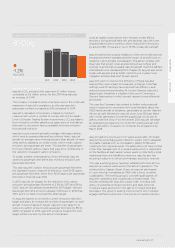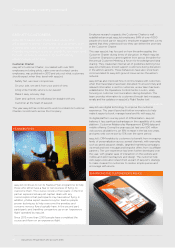EasyJet 2015 Annual Report Download - page 36
Download and view the complete annual report
Please find page 36 of the 2015 EasyJet annual report below. You can navigate through the pages in the report by either clicking on the pages listed below, or by using the keyword search tool below to find specific information within the annual report.
32 easyJet plc Annual report and accounts 2015
Corporate responsibility continued
A RESPONSIBLE AND SUPPORTIVE EMPLOYER
easyJet wants to be an employer that attracts
and retains the best people, values and promotes
diversity, and seeks to support and develop its
employees. It is on the strength of its people that
it will be able to meet the Company's ambition
to be Europe's preferred short-haul airline.
The airline has a three-part people strategy to help deliver this:
AT THE GATE
Making sure that the Company has the right people, in the right
job, at the right time, equipped to succeed and supported by
processes that work.
ON BOARD
Is about living the values, wanting to be part of the Company's
success and knowing the part they play in delivering this.
ABLE TO FLY
Means promoting a high-performance culture where continuous
improvement is expected, managed and rewarded so that all
people achieve their potential and deliver success.
At the gate – ensuring easyJet has the right people
The significant growth of easyJet has meant it has been crucial
to recruit high numbers of crew across Europe. Through a
high-volume recruitment programme it has successfully
maintained optimum employee levels and recruited over
290 pilots and over 1,300 cabin crew during the year.
In addition, the Company has recruited 390 people within
the management and administration and engineering and
maintenance teams to support the growth of the business. In
line with retention and development goals, 35% of these were
recruited internally. As at 30 September 2015 easyJet employed
10,388 (2014: 9,649) people across Europe.
The Company's recruitment processes are supported by
continued high retention rates. This year employee turnover
was 6.6%, compared to 6.7% in the 2014 financial year. Within
the different easyJet communities the turnover this year was:
11.3% for management and administration and engineering and
maintenance, 2.7% for pilots and 7.2% for cabin crew.
On board – living easyJet's values
Once on board easyJet works with its people to help them
understand easyJet's values and their role in the business and
to help them achieve their full potential. The Company does this
in a number of ways.
Induction
On joining the business all new recruits receive a detailed
induction programme to introduce them to the business,
its values and their role within easyJet. Induction includes
mandatory e-learning in key areas including ethics, safeguarding
our reputation, our customers (with a focus on the Customer
Charter) and about customers who have reduced mobility. In
addition, new recruits attend face-to-face induction sessions
where they come together to learn about the business through
interactive exercises.
Sudden cardiac arrest is a leading cause of death in Europe
and there are a significant number of cardiac arrests on
aircraft each year. According to the British Heart Foundation,
after a cardiac arrest, every minute without cardiopulmonary
resuscitation and defibrillation reduces someone's chance of
survival by 10%.
All easyJet aircraft now have on-board defibrillators. These
devices are simple to use and give crews and any medical
professionals travelling as passengers another option if
someone on-board is having severe heart problems.
Instruction on how to use defibrillators is now part of easyJet
crew training, in addition to the regular first aid training.
Safety reporting
Under easyJet's Air Operator Certificates it is required to
regularly report operating safety performance to the National
Aviation Authorities (NAAs) and to EASA.
Injuries that occur on-board easyJet aircraft are reported under
NAA regulations. easyJet has updated its Operational Safety
reporting system, SafetyNet, to ensure that RIDDOR (Reporting
of Injuries, Diseases and Dangerous Occurrences Regulations)
categories are accurately reflected and reviewed as part of the
investigation process. easyJet continues to review and develop
this process so that these categories are thoroughly investigated,
reviewed and reported.
Protecting customers and employees
easyJet's security team works to reduce vulnerability to security-
related risks. The team co-operates closely with government and
regulatory agencies throughout the network, to ensure strict
compliance with security regulations. Security risk assessments are
conducted for each airport and country to which easyJet flies.
The highest standards of vigilance are maintained regarding the
current geopolitical situation within those countries to inform these
assessments. easyJet implements measures to protect the
Company from corporate and aviation security risks, ensuring
internal governance of business-sensitive and personal data, vetting
our people and asset protection.
Safety in the supply chain
easyJet has established a new risk-based programme focused
around appropriate safety standards throughout its supply chain,
including for our ground handling agents. This has involved the
promotion of improved communication and engagement on
safety issues and the sharing and learning from best practice.
DEFIBRILLATORS ON-BOARD


